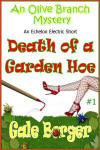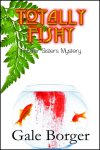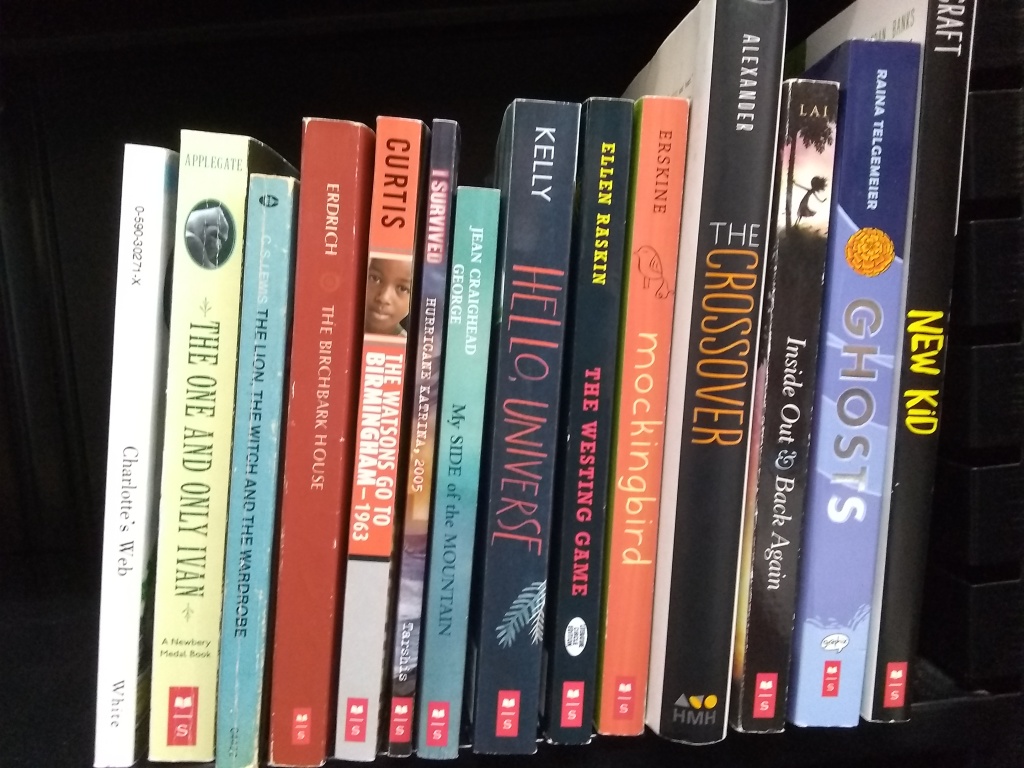 Today I’m welcoming Gale Borger to my series of author interviews. Gale writes humorous mysteries, including the Olive Branch series and the Miller Sisters Mystery series. Gale’s six Olive Branch short mysteries, formerly only available as ebooks, have just been released in a print collection that includes an all-new sixth mystery.
Today I’m welcoming Gale Borger to my series of author interviews. Gale writes humorous mysteries, including the Olive Branch series and the Miller Sisters Mystery series. Gale’s six Olive Branch short mysteries, formerly only available as ebooks, have just been released in a print collection that includes an all-new sixth mystery.
Elizabeth: Gale, thanks for visiting today.
Gale: Thank you for having me.
Elizabeth: Tell me a little about the Olive Branch kids and the mysteries they solve.
 Gale: The Olive Branch mysteries were the product of a brainstorm by Karen Syed, owner and President of Echelon Press out of Orlando, Florida. A huge proponent of the literacy movement, Karen came up with the idea of having several authors each publish a series of six short e-stories (one per month over the summer) in YA format, which would read like episodes. At the end of the sixth “Electric Shorts” installment, the readers would have read an entire story, but not face the intimidation of struggling through a long chapter book. The shorts worked great for summer reading programs.
Gale: The Olive Branch mysteries were the product of a brainstorm by Karen Syed, owner and President of Echelon Press out of Orlando, Florida. A huge proponent of the literacy movement, Karen came up with the idea of having several authors each publish a series of six short e-stories (one per month over the summer) in YA format, which would read like episodes. At the end of the sixth “Electric Shorts” installment, the readers would have read an entire story, but not face the intimidation of struggling through a long chapter book. The shorts worked great for summer reading programs.
Elizabeth: How did this idea evolve into the Olive Branch Mysteries?
Gale: Because I’m a Master Gardener, Karen suggested I write about gardening, and I tutor and work with many young adults in their late teens and early twenties, so it was decided that I take the teenage readers and develop my series from that.
I thought writing gardening for teens would be like trying to talk a group of Ultimate Fighters into taking ballet lessons. What I came up with was to establish a garden center where teens in trouble with the law could work off court ordered community service while receiving counseling and schooling at the same time.
The mystery comes into play while walking back to the garden center after a day of planting flowers downtown. The five teens, Cash, Pone, Shroom, Spaz, and Bean, stumble across a dead prostitute in an alley. They are compelled to find out who murdered her. Thus was born the first installment, “Death of a Garden Hoe.”
Elizabeth: Now tell me about the Miller sisters.
 Gale: I was sitting at home after knee surgery when my husband, Bob, dropped a laptop into my lap and said, “It’s time for that story to come out, Gale.”
Gale: I was sitting at home after knee surgery when my husband, Bob, dropped a laptop into my lap and said, “It’s time for that story to come out, Gale.”
I started out by sketching characters; taking personality traits, quirks, eccentricities (and just plain weirdness) from my siblings, my friends, my mother and her friends, and from people I’ve known over the years. I came up with four girls raised on a farm (Buzz, the eldest, is Wisconsin’s newest member of the AARP). Buzz is an ex-detective, and in each of the books, one of the sisters “help” solve a murder. The results are pretty funny. Mag is a high school biology teacher, Al is a librarian, and Freddie owns the local pet shop. Buzz’s love interest is a childhood friend and the local Sheriff, and they still make all major decisions by the tried and true Rock, Scissors, Paper method.
Elizabeth: But how can murder be made funny?
Gale: Murder is never funny, but how you get to the truth can be a riot.
Elizabeth: As a mystery writer, do you find you need to outline the plot before you begin writing?
Gale: I don’t outline, I develop characters. They write the stories.
Elizabeth: Is there a mystery writer you especially admire or one that you read to learn the craft from?
Gale: There are many writers I admire and read. The truth of the matter is I’ve spent over twenty years in law enforcement, so I know crime, and the people who commit crimes. Actually, some of my favorite people are bad guys. I grew up with humor, and hung out with creative and funny people. When it came to putting it all down on paper, it seemed natural to combine the two.
Elizabeth: Do you find that you need to work and plan to be humorous in your stories, or does the humor just flow?
Gale: Great question. The humor flows. Humor has to come naturally, or it looks forced–like punch lines stuck where they don’t belong. If you have funny characters, they will do things in a funny manner. Quick, witty dialog is so very important. That is why I stress character development. I never know what is around the corner, but my characters fling me around it like crack-the-whip.
Elizabeth: Anything else you’d like us to know about your books?
Gale: Well, now that you mention it, I’ve been asked if I thought it was rather silly and far-fetched to have grownups have nicknames and Three Stooges humor. The funny thing is, I really do have a sister with the nickname of Maggot, mine was Buzz, and I have a sister Sam, whose real name is not Samantha! The old ladies with police scanners are real (thanks to Mom and her friends), and we really do call my baby sister Jack the Tripper. Mark Twain once said, “Truth is stranger than fiction, but it is because fiction is obliged to stick to possibilities; truth isn’t.” I don’t know about strange, but the truth sure can be funny!
Elizabeth: Enough of your book—tell us about yourself.
Gale: I grew up in northeast Illinois on a horse farm in a household who watched Red Skelton, Jack Benny, Dick Van Dyke, and The Three Stooges. I loved Carol Burnett, Gilda Radner, Lily Tomlin and Lucille Ball–brilliant comediennes who didn’t have to take their clothes off to entertain their audiences. I love screwball comedy and I don’t apologize for pie-in-the-face jokes.
I’ve lived in southeastern Wisconsin for the past 20 years. I have a Bachelor’s degree in Criminal Justice and a Master’s degree in Education. I have been a Correctional Officer with the Walworth County Sheriff’s Office for the past seventeen years, and I already mentioned I was a Master Gardener, and I want to learn to train therapy dogs (in my spare time, of course).
My husband Bob and I have about 1,000 gallons of freshwater tropical fish, and Bob makes the best tropical fish food you can buy (captainbobsfishtales.com). Our daughter, Shannon is a double music major at UW Milwaukee, and plays a mean trombone.
Elizabeth: We’ve now reached the time in our interview for the let’s-get-to-know-the-author-better, nearly-pointless, sort-of-silly, rapid-fire questions:
Elizabeth: Coffee or tea?
Gale: A pot-o-coffee in the morning, tea in the late evenings, and Diet Pepsi any time of day.
Elizabeth: Ocean or mountain?
Gale: Mountains. I love the water, but I’ll take a lake over an ocean any day.
Elizabeth: Hiking or shopping?
Gale: Hiking-definitely. I abhor shopping!
Elizabeth: Violin or piano?
Gale: Piano if it’s Victor Borge
Elizabeth: Historical fiction or fantasy?
Gale: I prefer hysterical over historical fiction
Elizabeth: Darcy or Heathcliff?
Gale: Mr. Darcy, of course. How can one resist a 200 year old unattainable, yet endearingly awkward man, who loves you for who you are, who sees you as an intellectual equal, and he’s a rich, handsome guy to boot?
Elizabeth: Love scene or death scene?
Gale: Love scene (sans the milky white thighs), which turns into the death scene.
To learn more about Gale and order her books, visit her blog: http://galeborgerbooks.com
her Amazon.com Author page: http://tinyurl.com/9wz9ktm
and her Barnes and Nobel Author page: http://tinyurl.com/a8nbkmd






